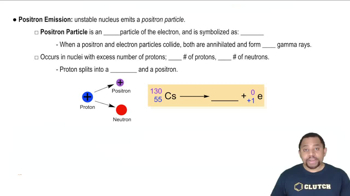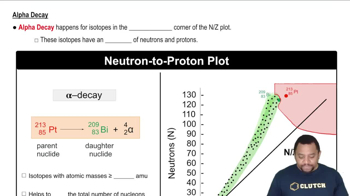Textbook Question
Write balanced nuclear equations for the following transformations:
(b) nitrogen-13 undergoes electron capture.

 Verified step by step guidance
Verified step by step guidance



Write balanced nuclear equations for the following transformations:
(b) nitrogen-13 undergoes electron capture.
Write balanced nuclear equations for the following transformations: (c) technicium-98 undergoes electron capture.
Decay of which nucleus will lead to the following products: (a) bismuth-211 by beta decay?
Decay of which nucleus will lead to the following products: (c) tantalum-179 by electron capture?
What particle is produced during the following decay processes: (c) iodine-122 decays to xenon-122?